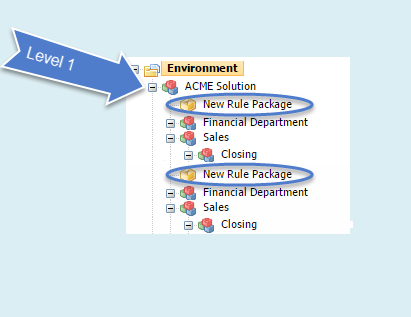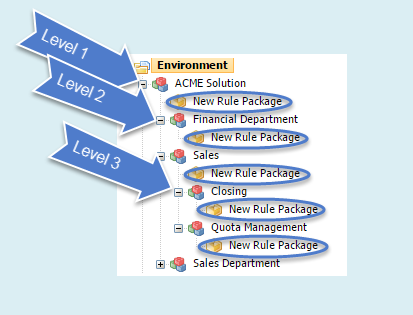Contents
New Features by Release
New in Hot Fix 8.5.100.15
GRE Memory Monitor
The Memory Monitor is a new feature built in to GRE itself. It is designed to periodically check GRE's memory usage, and set its operational state to "over threshold" if memory usage exceeds the configured threshold. The state is reset to back to "normal" if memory usage comes back below the threshold. It also provides an option ("adaptive" strategy) to automatically adjust the configured threshold if an out-of-memory error occurs before threshold is reached (for example, if the configured threshold was set too high).
The memory monitor sets this state in two places:
- status.jsp—This .jsp provides a "health check" URL for load balancers to use. If the memory usage is above the configured threshold, status.jsp returns SYSTEM_STATUS_MEMORY_USAGE_ABOVE_THRESHOLD (HTTP 503 status). Load balancers should be configured to route requests only to GRE nodes whose status.jsp returns SYSTEM_STATUS_OK (HTTP 200 status).
- Genesys Management Layer—The Memory Monitor will also notify Genesys Management Layer if the memory is in an overloaded state by setting the status to SERVICE_UNAVAILABLE.
New in Release 8.5.100.21
Automatic Protocol Detection Override
You can use the deploy-method configuration option to override the automatic detection of the protocol that is used to construct the "callback" URL used by GRE to fetch the DRL. Previously, when deploying from GRAT to GRE, GRAT automatically detected whether it was running http or https, and used that protocol to construct the "callback" URL used by GRE to fetch the DRL. However, when running through an ELB, GRAT could sometimes wrongly think it was running over https, when the link between the ELB and GRAT server is http. This might cause issues in deployment. The default value of the new configuration option is auto. GRE will use the selected method to connect with the GRAT server during deployment.
Enable/Disable Nested Solutions
In GRS 8.5.1, a new feature was added called 'Nested Solutions Business Hierarchy', which enables an authorized user to create a new rule package anywhere in the business hierarchy. Because some customers might want to restrict their users to creating rule packages under the Solution node only, in release 8.5.100.21 a new configuration option—enable-nested-solutions—has been implemented that allows users to enable or disable this feature. Disabling this feature is recommended for iWD users.
Support for the French Canadian (FRC) language
Support for the French Canadian (FRC) language is implemented in this release.
Setting Department from Process Properties
Based on properties of the Process GRE can determine the relevant Department. Configuration option iwd-set-department-from-process with value true enables GRE make this determination and so to run rules created for Department and Process, if the Department is not specified elsewhere. If the option is set to true then the Engine will set the Department from the Process for ESP server requests. The setting of the Department from the Process will only occur if the Department is not specified and the business context level 1 is not specified.
New in Release 8.5.1
Support for Test Scenarios in Conversation Manager
In the initial 8.5.001 release of GRS, the Test Scenario feature did not support rules that were created using the Conversation Manager (CM) template. This is because the Test Scenario feature in release 8.5.001 works by taking the input data (a set of one or more facts with different fields) that is configured by the user and building the appropriate Fact model, then running the rules under GRAT using that set of data. In release 8.5.1, the Test Scenario feature now supports rules based on the CM template.
Data Structure in CM
With Conversation Manager, the data is in a hierarchical JSON format of Customer -> Service -> State -> Task. Any given Customer may have one or more Services. Each Service may be in at most one State at a time. Each State may have one or more Tasks. Tasks may also be associated directly with Services.
So the Customer, Services, States and Tasks Facts have now been added the lists of Facts that can be defined as Given fields, and the RulesResults Fact has been added to the list of Facts that can be defined as an Expectation.
Each of the new values is represented by a JSON string which will be the value for that field.
Now, when the type of rule for which you want to create a test scenario is a Conversation Manager rule (based on the Conversation Manager template), a series of different values for the Given and Expectation elements that reflect these more complex data structures are available. In the example below you can see the Customer > Service > State > Task structure is reflected by the four @class entries in the drop-down list of Givens and the @class:RulesResults entry in the drop-down list of Expectations.
When you select an @class entry, a new column is added. Click on a grid cell under the new column to bring up the edit dialog for that entry. The additional data listed below can be selected as either a Given or an Expectation.
Additional CM Template Objects
Givens
The list below shows the additional provided data.
- Available by selecting one of the @class entries:
- Add Customer Attribute
- Add Service
- Add Service Type
- Add Service Start Time
- Add Service Completion Time
- Add State
- Add State Type
- Add State Start Time
- Add State Completion Time
- Add Task
- Add Task Type
- Add Task Start Time
- Add Task Completion Time
- Available for direct selection from Givens:
- Add Interaction Media Type
- Add Contract End Date
Expectations
The list below shows the additional expected results:
- Update Customer Attribute
- Request Specific Agent
- Request Agent Group
- Request Place Group
- Request Skill
- Send Communication to Customer
- Block Communication to Customer
- Offer Service Resumption
- Offer Survey to Customer
Edit Dialogs
To create entries for the Givens and Expectations of your Conversation Manager test scenario, select the relevant @class item and use the sample additional edit dialogs shown below.
Givens
Expectations
Test Scenario Enhancement
Test scenario results can now show disqualified rules and details of how individual rule conditions were evaluated, enabling much more detailed debugging during rule development. Before the 8.5.1 release, only the result of rules that fired were returned to the REST client that made the rule evaluation request. Now, details of the rule execution log can be displayed when the GRE include-rule-evaluation-detail-in-response option (introduced in 8.5.001) is set to value true. Details include rules that were disqualified and why, as well as rules that fired, and other log-level data.
Nested Solution Business Hierarchy
In release 8.5.1 of Genesys Rules Authoring tool, if you have permission to create a new rule (Rule Package - Create) you can now add a new Rule Package at any node in the business hierarchy (a nested solution), rather than just at the first level.
Unloading from Memory of Unused Rule Packages
If a rule package is not used for a defined period of time, it can now be automatically unloaded from memory. A new configuration option controls this behavior:
- unload-inactive-package-timeout
- Value—The time (in minutes) for an inactive package to remain loaded before it is automatically unloaded.
- Default—No timeout.
If the option is not specified, then packages are loaded in GRE with no timeout. If a request for a rule package is received after the package has been unloaded, it is automatically loaded into memory again and the timer is restarted.
Enhanced cross-browser security features
Browser security has been improved to eliminate cross-site request forgery.
Platform/Database Support Changes
- Additional Platform Support
- Java 7
- Windows 2012
- Red Hat Enterprise Linux 7 64-bit native
- Discontinued Platform Support
- Java 6
- Windows 2003
- Additional database support
- Oracle 12c
- MS SQL Server 2012
- PostGRESQL 9.4
New in 8.5.0
New Features in 8.5.0 (new document)












